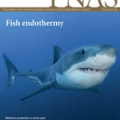Nature, Science, and PNAS are the three most prestigious general-science journals, and Nature and Science are among the most influential journals overall, based on the journal Impact Factor (IF). In this paper we perform automatic classification of ~50,000 articles in these journals (published in the period 2005-2015) into 14 broad areas, to explore disciplinary profiles and to determine their field-specific IFs. We find that in all three journals the articles from Bioscience, Astronomy, and Geosciences are over-represented, with other areas being under-represented, some of them severely. Discipline-specific IFs in these journals vary greatly, for example, between 18 and 46 for Nature. We find that the areas that have the highest disciplinary IFs are not the ones that contribute the most articles. We also find that publishing articles in these three journals brings prestige for articles in all areas, but at different levels, the least being for Astronomy. Comparing field-specific IFs of Nature, Science and PNAS to other top journals in six largest areas (Bioscience, Medicine, Geosciences, Physics, Astronomy, and Chemistry) these three journals are always among the top seven journals, with Nature being at the very top for all fields except in Medicine.
翻译:自然、科学和PNAS是三大最有声望的普通科学期刊,自然和科学是依据《影响因素》杂志(IF),总体而言最有影响力的期刊之一。在本文中,我们将这些期刊(2005-2015年期间出版)中约50 000篇文章自动分类为14个大领域,以探讨学科概况并确定其具体领域的综合框架。我们发现,在所有三个期刊中,生物科学、天文学和地球科学的文章所占比例都过高,而其他领域所占比例也不足,其中一些严重不足。这些期刊中专有纪律的综合框架差异很大,例如,18至46个关于自然的。我们发现,具有最高纪律性的综合框架的领域并不是提供最多文章的领域。我们还发现,这三个期刊中发表的文章在所有领域都具有声望,但在不同级别,至少是天文学领域。将自然、科学和PNAS等特定领域的文章与六个最大领域(生物科学、科学、物理、物理、天文学和化学)的其他高级期刊进行比较。这三家杂志在医学领域总是名名顶尖的期刊中,只有7个领域。



